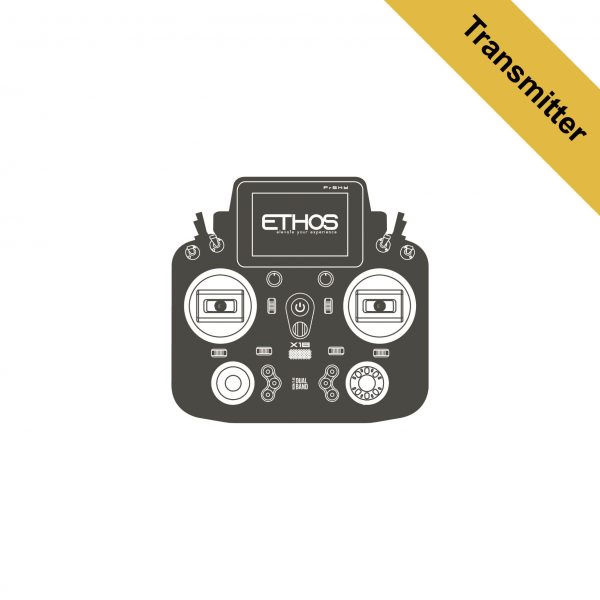Click here to return to the Main Storefront
Radio system transmitters and receivers
There are a number of different radio technologies suitable for use in a submarine. The one that you choose is dependent upon your operational environment and what your goals for the boat are. Let's take a look at them:
_________________________________________________
Low Frequency (72, 75, or 40mhz):
These are the old, tried and true radios that have been in use for decades. Low frequency radio waves actually penetrate water quite well, and you can expect to maintain control of your submarine in fresh water environments to depths in excess of 20ft. This depth is also a function of distance, the further away you are, the more shallow you must remain.
Unfortunately, these radios are no longer being produced and the only options are used radios, or new old stock (NOS) found from hobby stores clearing out old stock.
On the plus side, if you can find them, the radios are typically quite inexpensive. On the downside, you must fight with frequency-matching transmitters and receivers, they tend to be quite susceptible to radio interference, and if you're operating in an environment with multiple skippers, you MUST ensure that you do not overlap frequencies with another captain.
_________________________________________________
High Frequency (2.4ghz):
These radios were often ignored as a potential control system for RC submarines, cited as not allowing these craft to be "real" submarines. The reasoning behind this stems from the fact that high frequency radio waves do not penetrate water well at all. The antenna must be located above the waterline at all times, limiting the craft to either surfaced or periscope depth trim.
This is far less of an issue than people make it out to be.
Most experienced skippers will not operate their boat in "black water", IE: water that does not allow full visibility of both the submarine and any potential underwater obstacles at all times, at any depth greater than periscope depth anyway. Running fully submerged with no visual reference to boat or hazards is foolhardy and likely to end with an empty boat cradle on the way home. With this being the case, use of 2.4ghz is completely acceptable and offers the skipper the advantage of rock-steady control, as well as all of the features and benefits of modern radios including full programmability, integrated failsafe systems and much more.
The only thing you need to do to integrate these systems is extend the stock antenna from your receiver out of your wateritght cylinder and extend it out a periscope or mast.
_________________________________________________
Mid Frequency (900mhz):
This is rapidly being accepted as the new standard for RC submarine control. 900mhz at higher output frequencies (500mW and up) does a very good job at penetrating water.
Like the 2.4ghz radios, you get all of the modern features of new radios, including rock solid control, integrated failsafes and full programmability, but you no longer need to run an external antenna above the surface. Submerged operation is absolutely possible and performance is equivalent to old low frequency radios. These modern radios also allow for realtime feedback of signal quality to the receiver, and add-on modules can relay back to the transmitter information such as battery state, heading, temperature, pressure and much more.
_________________________________________________
A Note about salt water: Impurities in water such as minerals and chemicals will affect the ability of radio waves to penetrate water, depending on the concentration of the impurities. In perfectly fresh water, for instance, you could expect to maintain radio communication with your boat in excess of 20ft (or 6m for us metric-minded folks). A chlorinated swimming pool, however, can reduce that range significantly to something more like 6ft (2m). Heavily salty water such as ocean water is even worse, and range drops to a matter of inches. So, in summary, wireless control of an R/C submarine in salt water is not possible without additional hardware, such as a buoy.
Huge Selection of Tutorial Videos on the FrSky Radios - CLICK HERE
Download the instruction manual for the VEX radio here.
Detailed instructions on converting 2.4GHz radio gear for use in RC submarines



















